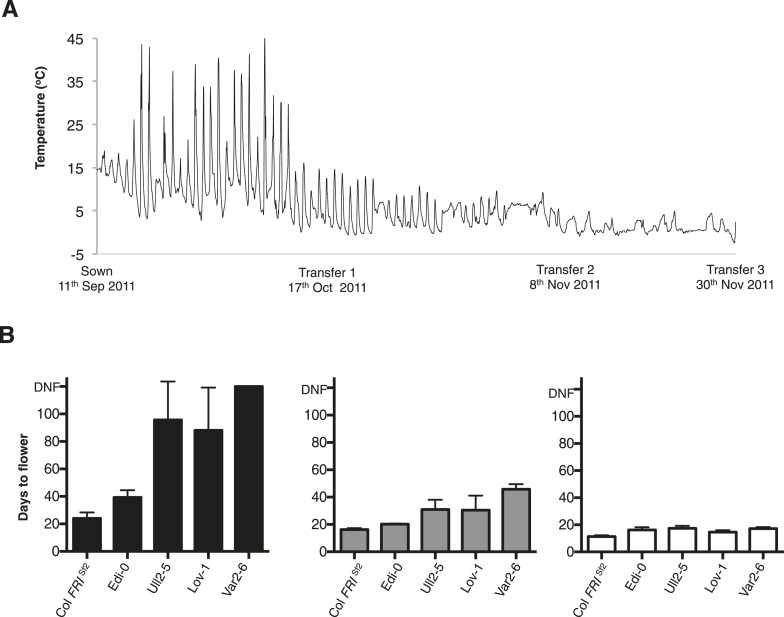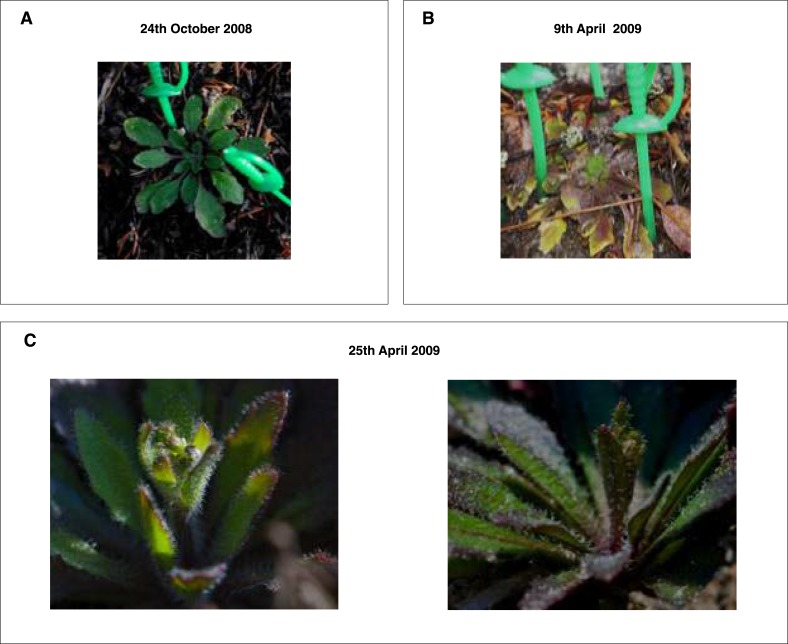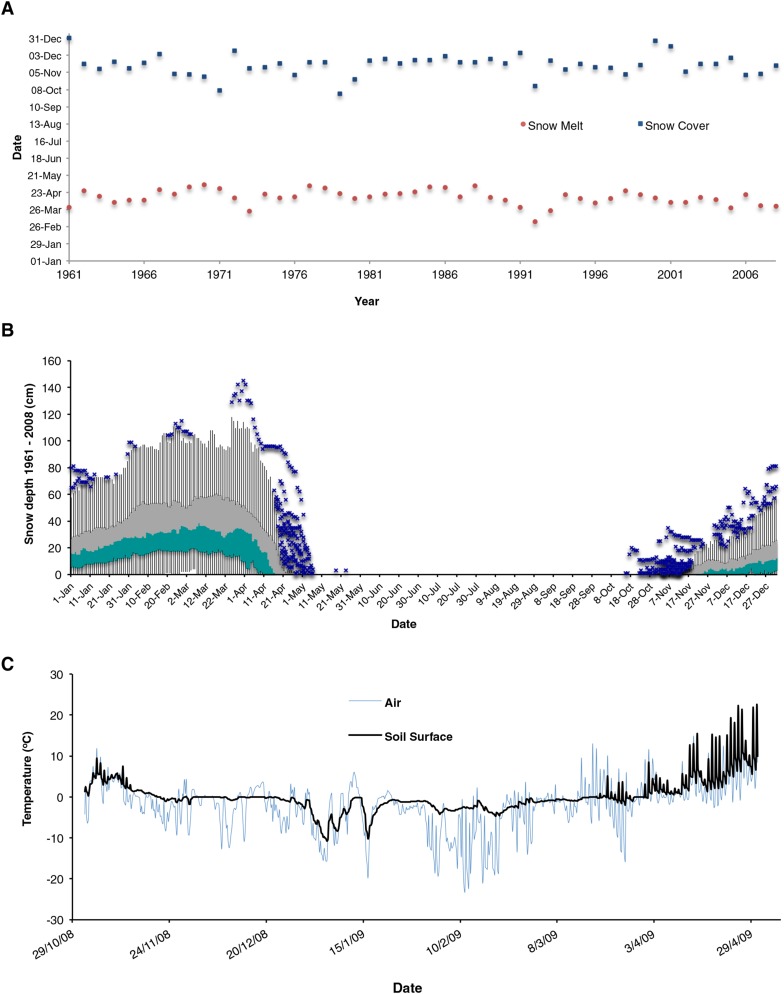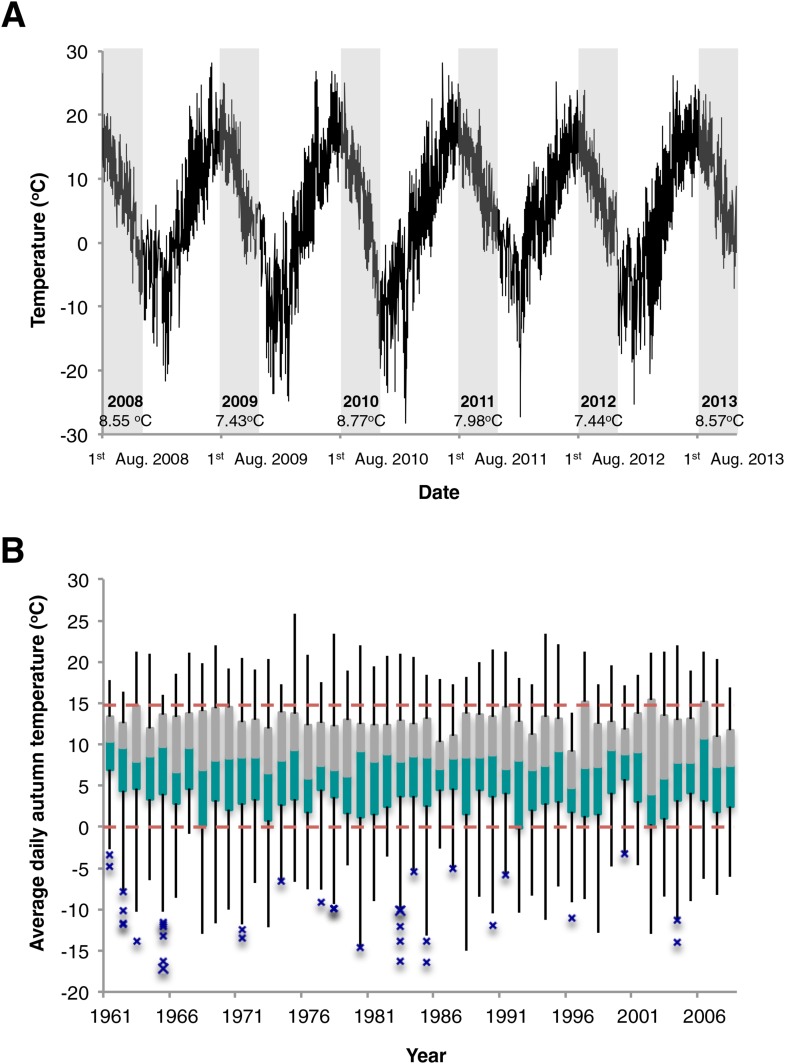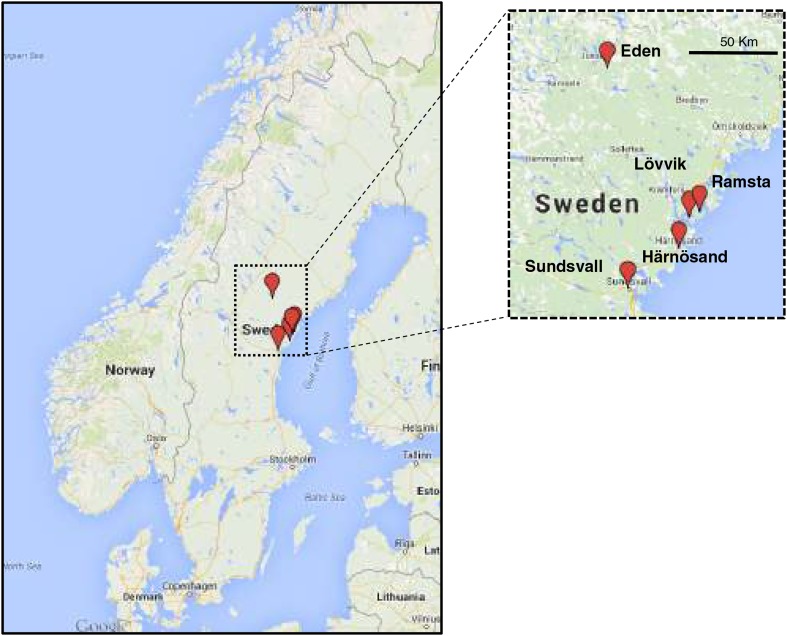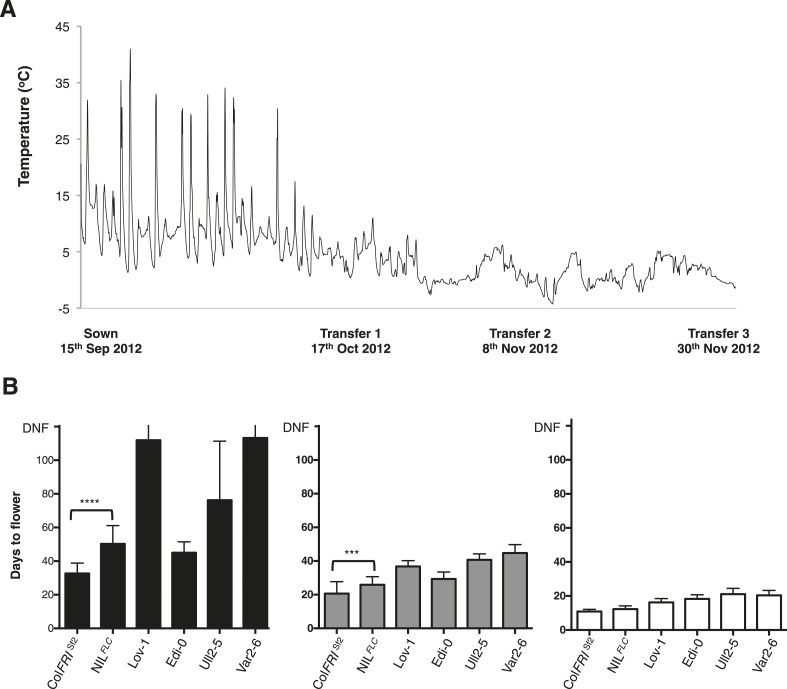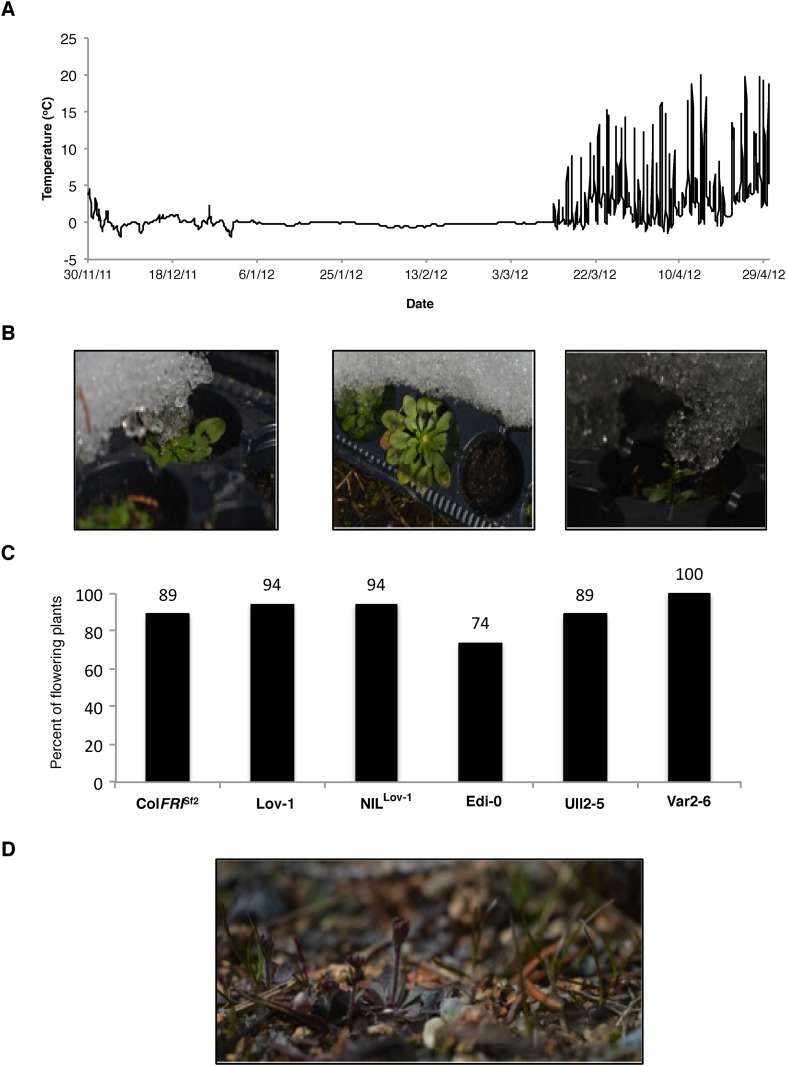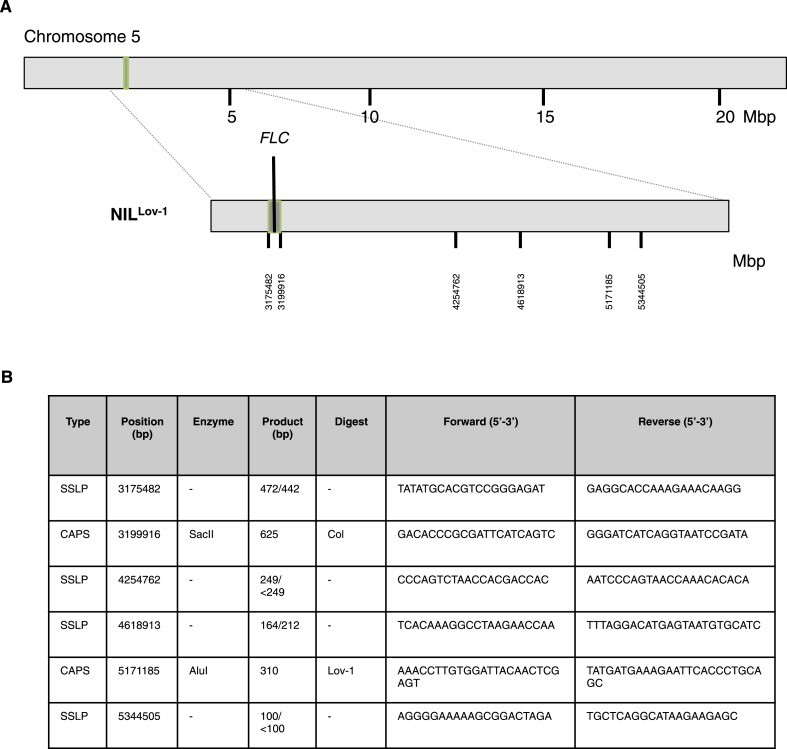Figure 3. Field experiments reveal vernalization occurs in autumn in northern Sweden.
(A) Date of sowing and plant transfers to the greenhouse are shown with hourly soil surface temperatures recorded during autumn 2011. (B) Days to flower recorded after plants were transferred to a warmed greenhouse at three time points during autumn: Transfer 1 (black), Transfer 2 (grey) and Transfer 3 (white). n ≥ 10. Error bars = ±S.D.
DOI: http://dx.doi.org/10.7554/eLife.06620.009

